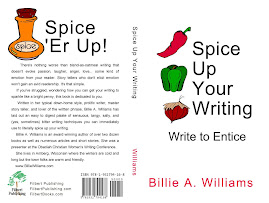Forensics, the what, why, how, and sometimes where, encompasses many avenues of investigation, both for the writer and the professional charged with ferreting out the nitty-gritty of a death or a crime and it is crucial for a reader to understand why they should care.
It becomes a valuable tool for the mystery writer when his/her accidental or professional sleuth is showing a reader what happened. For instance: a victim’s blood—how does it look? Yes, I know red…but even that – bright red indicates new blood pumping from the heart—dark red filled with the detritus of cleaning the system and removing impurities, calories or what have you, but it’s also a sign of old blood in terms of when it was spilled. I’m not a pathologist or forensic genius but find the investigation process intriguing. What can we learn from a victim’s corpse, specifically related to the blood.
Do you know how blood looks when it hits glass? Could you tell at what angle it came from? The type of surface it hits makes as much difference as the pattern it creates. It is also possible to decide whether the perpetrator would possibly have been spattered by the victim’s blood by closely examining surround areas.
Spatter patterns, spatter type: was it impact spatter; beating, stabbings, gunshots, foreign object impacts the victim. Projection spatter; arterial bleeding, cast-off blood, and expirated, or exhaled blood. Combination spatters; impact and projection spatters, stab wound in the chest or neck = impact spatters.
These patterns can actually, by shape and pattern of the drops within a blood spatter, reveal how the spatter was produced.
Velocity of spatters tells the investigator even more. Low-velocity; object moving less than 5 feet per second. Mid velocity; objects moving between 5 and 100 feet per second. (Think of your favorite baseball pitcher how fast does his curve ball travel?) High velocity; object faster than 100 feet per second. At high velocity the appearance of the blood spatter produces almost mist-like stains.
A blunt object will show the blood spatter close to the victim because of the relatively slow speed of the force. A bullet on the other hand will definitely have a different, high velocity spatter. There will be a difference in the entrance (blowback) wound and the exit (forward spatter) wound pattern.
Blood on glass, concrete, smooth painted wallboard, wherever the mystery writer has written the scene, evidence will leave telltale clues and a path for the writer to follow.
Tess Gerritsen , Lisa Gardner
, Lisa Gardner ’s detectives stories of mystery suspense sometimes go into a great deal of forensic detail as they investigate crimes in their novels. Patricia Cornwell
’s detectives stories of mystery suspense sometimes go into a great deal of forensic detail as they investigate crimes in their novels. Patricia Cornwell ’s sleuth, Scarpetta, is a forensic pathologist. The word, Pathologist, suggests she digs for cause of death by examining the victim’s body. Was it natural, accidental or murder? She walks the read through what the body tells her. The reader will be very aware what a doctor can glean from the physical examination of one of his/her patients. Perhaps, not quite as much as the pathologist does, but certainly more than a casual observer of human anatomy does. While Cornwell doesn’t overload the reader with details, she adeptly weaves the information into the tale of discovery so that the reader can understand how she came to her conclusions.
’s sleuth, Scarpetta, is a forensic pathologist. The word, Pathologist, suggests she digs for cause of death by examining the victim’s body. Was it natural, accidental or murder? She walks the read through what the body tells her. The reader will be very aware what a doctor can glean from the physical examination of one of his/her patients. Perhaps, not quite as much as the pathologist does, but certainly more than a casual observer of human anatomy does. While Cornwell doesn’t overload the reader with details, she adeptly weaves the information into the tale of discovery so that the reader can understand how she came to her conclusions.
Investigators can accurately reconstruct the crime scene from blood stains. Technology is such that even attempts to clean an area of blood stain evidence can be revealed via certain lighting devices.
An interesting case in point, the Sam Sheppard case. The bludgeoning death of his wife, blood evidence convicted him and years later blood evidence, supposedly, proved his innocence. If you are going to give your reader information, be sure you let them know the what, where, how and why of your conclusive evidence. You will have a happy reader or at least a satisfied reader who may, or may not, agree with your solution. F. Lee Bailey used his evidence in two different ways, so too, could you.
Forensic For Dummies  by D.P. Lyle, MD answers a myriad of questions for the mystery writer. Blood related information is only one of them. There are many more books out there to deliver accurate forensic information for the writer and the internet has made finding them that much easier. Don’t trust your imagination get the facts straight from a reliable source. Your reader will follow you, because they know they can trust you to give them accurate details in your story.
by D.P. Lyle, MD answers a myriad of questions for the mystery writer. Blood related information is only one of them. There are many more books out there to deliver accurate forensic information for the writer and the internet has made finding them that much easier. Don’t trust your imagination get the facts straight from a reliable source. Your reader will follow you, because they know they can trust you to give them accurate details in your story.
Make your reading time absorbing. Pit your wits against the accidental sleuth, who may be in a job like yours. Subscribe to my free e-zine Mystery Readers and Working Writers, the free e-zine for mystery lovers. Get a free e-booklet “ A Nice Quiet Family” a very short/flash mystery http://www.billiewilliams.com














